Decoding Roaming Costs: What Factors Influence International Charges?
Imagine opening your monthly mobile bill and seeing charges totaling £30,000 — accumulated by just one employee on a single trip. It sounds impossible, but this exact scenario unfolded recently for a UK business. An employee went on holiday to the Maldives, unaware it was categorised as a high-risk "no-agreement" roaming zone. Without realising the implications, he used his company-issued phone exactly as he would back home: checking emails, joining video calls, and occasionally streaming content. The employee returned relaxed; but the business faced the shock of a bill in the tens of thousands.
Sadly, this isn’t an isolated incident. UK businesses regularly send staff overseas, especially during peak travel seasons, often assuming mobile usage will be covered by standard roaming agreements. But without a clear understanding of international roaming charges and how exorbitant they can be, businesses frequently face severe financial shocks.
At Babble, I help companies avoid exactly this kind of nightmare scenario. Whether it's small teams travelling internationally or global logistics companies tracking vehicles abroad, I’ve seen the confusion and the unexpected charges. But I’ve also witnessed how the right knowledge, planning, and controls can drastically change outcomes.
This guide will clarify what impacts roaming charges, debunk common misconceptions, and give practical advice for avoiding costly surprises.
-
What This Blog Covers:
- What is Roaming?
- Why Are Roaming Costs So Expensive?
- O2 Roaming Passes: Costs, Caps & Country Coverage
- Four Key Factors Influencing Roaming Costs
- Common Roaming Myths vs. Reality
- How to Roam Smarter
What Is Roaming?
Roaming happens when your mobile device connects to a foreign network, not owned by your UK provider, such as Verizon in the US or Etisalat in the UAE. Your UK provider, like O2, pays the foreign network to provide you with service, and this cost is passed on to you. Charges vary significantly based on your network provider, travel location, usage, and roaming package structure.
Why Are Roaming Costs So Expensive?
Roaming costs vary because mobile providers categorise countries into zones based on the roaming agreements they have with local networks. Each zone determines the availability and pricing of roaming services.
Since Brexit, O2 is currently the only major UK provider offering inclusive business roaming within its Europe Zone (Zone 1), covering 48 European countries. In this zone, employees can use their phones just as they would in the UK, with an allowance of 35GB, without incurring additional roaming charges.
Countries outside this Europe Zone are grouped by O2 into other international zones, each with different allowances and pricing structures: 
- Zone 2 (Predictable Costs, Beyond Europe): Includes popular business destinations outside Europe, typically covered by O2’s standard business roaming passes with predictable daily or monthly fees.
- Zones 3 (Limited Allowances, Additional Costs): Cover additional international destinations but often come with restrictions on call and text allowances, meaning additional charges apply beyond data usage.
- Zone 4 “No-Agreement" countries (Where £30,000 Bills are Born): Certain high-risk destinations — often parts of Africa and Asia, including the Maldives and Mauritius — do not have roaming agreements at all. In these countries, your roaming is billed per minute, text, and megabyte, quickly leading to extremely high charges if not proactively managed.
In my experience, unmanaged usage in these Zone 4 destinations can rapidly escalate into tens of thousands of Pounds. I’ve personally seen businesses facing charges upwards of £30,000 from single trips to these areas, highlighting the critical need for awareness and planning.
O2 Roaming Passes: Costs, Caps & Country Coverage
O2’s roaming passes provide predictable roaming costs for businesses regularly travelling outside Europe. Two tailored options help manage international roaming expenses:
- Rest of World 30-Day Pass (£99/month): Covers 96 countries outside Europe, providing a monthly allowance of data, calls, and texts. Specifically, it includes 5GB of data, 3,000 minutes, and 3,000 texts for Zone 2 countries. In Zones 3 and 4, it includes data allowances only, calls and texts incur standard rates.
- Rest of World 24-Hour Pass (£7.50/day): Ideal for brief or occasional travel, this pass also covers 96 countries, providing a daily allowance of 500MB data, 300 minutes, and 300 texts in Zone 2 countries. For Zones 3 and 4, again, it offers data only, with additional charges for calls and texts.
 For the 24-hour pass, businesses can select usage caps based on their needs, preventing excessive costs from employees inadvertently triggering multiple daily charges:
For the 24-hour pass, businesses can select usage caps based on their needs, preventing excessive costs from employees inadvertently triggering multiple daily charges:
- One-pass cap: Stops service after one pass per day. (£7.50 maximum per day)
- Two-pass cap: Allows up to two passes daily (£15 maximum per day).
- Uncapped: Allows unlimited passes, leading to potentially significant charges.
Proactively selecting appropriate usage caps ensures predictable roaming costs.
Four Key Factors Influencing Roaming Costs
Destination Matters Significantly
Most UK contracts include some EU roaming, making Europe generally low risk. However, even slight variations in country coverage require checking before travel, especially since zones differ between networks. Outside Europe, standard daily rates apply, and hidden limits can quickly inflate costs. Certain destinations, particularly Zone 4 countries like Mauritius and the Maldives, pose substantial financial risk due to their lack of roaming agreements. Costs here are charged per-minute, per-text, and per-megabyte, which can quickly accumulate into tens of thousands of Pounds if unmanaged.
Usage Drives Costs
Roaming charges escalate with specific mobile activities. Streaming videos, uploading files, using GPS navigation, or tethering laptops consumes substantial data. Even passive usage apps running in the background or cloud backups can quietly drain data. Users often don’t realise their activities are rapidly draining or exceeding their daily roaming allowances.
Real-Time Controls Are Crucial
Roaming usage isn't reported in real-time; it can take up to 72 hours for international data to appear, often too late to prevent excessive charges. Without proper controls, businesses rely on employees to manage their usage independently, which is a risky strategy. Implementing tools like Mobile Device Management (MDM) helps enforce usage limits, restrict high-data apps, and ensure employees adhere to your roaming policies, safeguarding your business from avoidable costs.
Employee Communication and Accountability
An overlooked yet critical factor in roaming cost control is employee accountability. Often, employees neglect to inform businesses when travelling abroad, especially for personal holidays, as they aren't directly responsible for paying the mobile bill. This lack of transparency leaves businesses vulnerable to unexpected costs. Clearly defined policies, proactive communication, and regular reminders of financial implications can significantly reduce these risks.
Common Roaming Myths vs. Reality




How to Roam Smarter
Effectively managing roaming involves more than just selecting the right Pass; it requires practical strategies and proactive planning. Here’s how your business can roam smarter:
- Confirm Employee Travel Plans and Coverage: Always ensure employees inform you of their travel destinations before departure, including personal holidays so you can proactively verify roaming coverage and zone classifications. Even a brief call or short data session in a country without appropriate coverage can escalate quickly into significant and unexpected costs. Proactive checking helps you control and minimise these risks before travel begins.
- Implement Usage Controls with MDM: Deploy Mobile Device Management (MDM) solutions to actively restrict high-data apps, streaming, and background data consumption. MDM helps enforce your roaming policies automatically, preventing unintended overspending.
- Prioritise Secure Wi-Fi Usage: Encourage employees to use trusted hotel, office, or café Wi-Fi networks whenever possible to minimise roaming data costs. However, public Wi-Fi presents serious business risks, including potential data breaches, cyber attacks, and regulatory compliance issues. Always mandate the use of VPNs (Virtual Private Networks) to encrypt and protect sensitive corporate data, ensuring security even on potentially vulnerable public networks.
- Establish Clear Communication and Accountability: Clearly communicate your company’s roaming policies and expectations around usage. Encourage employees to proactively report all international travel, including personal holidays, so your business can maintain control over roaming expenses.
What’s Your Next Step?
The key to managing roaming effectively is proactive planning, clear communication, and practical controls. Successful businesses anticipate travel needs, employ strategic solutions, utilise MDM controls, and consistently educate their teams.
If your business involves international travel or if employees regularly use company-issued mobiles abroad, unmanaged roaming can seriously harm your bottom line. But roaming doesn’t have to be a costly gamble.
At Babble, I work closely with organisations to create effective roaming strategies. Whether reviewing current policies, establishing clearer limits, taking control now will prevent financial shocks later. If you’re unsure how your current setup measures up or if you want to avoid surprises this travel season, it’s time to talk.
.png?width=170&height=170&name=image%20(7).png)
Grahame Lewis
As a Business Development Director at Babble, Grahame is dedicated to guiding businesses through their digital transformation journey. With over three decades in the industry and 15 years at Babble, he is renowned for delivering cutting-edge solutions in Cloud, VoIP, Mobile, and Cyber Security, always striving to be an early adopter of innovative technology.

Never miss an article again
Subscribe to our blog updates and get the latest articles delivered right into your inbox.
Subscribe by email
You May Also Like
These Related Stories

How Much Should I be Paying for my Blue-Collar Team's Mobile Plans?

Avoiding Roaming Bill Shocks: Best Practices and Real-World Solutions



